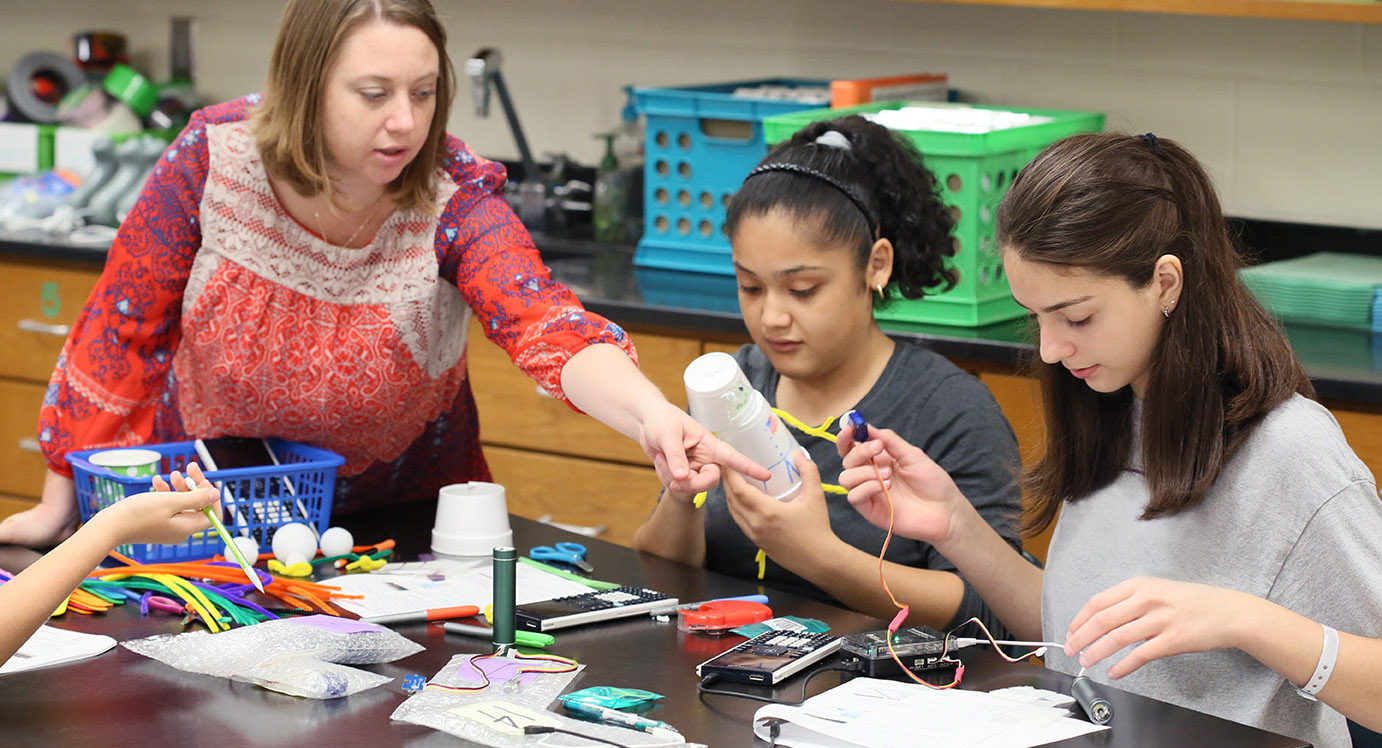
In an age of overwhelming classroom technology,
here’s why graphing calculators add up
Peter Balyta, Ph.D., President of Texas Instruments Education Technology
I’ve been getting some questions recently about the usefulness of graphing calculators when we’re already surrounded by laptops, tablets and smartphones. There’s no arguing the transformative effect of this technology on our world. But in the classroom, these general-purpose devices have had mixed results.
As a former math teacher, a parent of two teenagers, and someone with a front-row seat to the education technology business for the past 15 years, I can assure you that this important issue runs deeper than you realize.
There is little debate about the effectiveness of graphing calculators to help students learn math and science. The real question is about how students access this tool.
While the vast majority of students already have a handheld graphing calculator, there is no guarantee they have access to a smartphone, laptop or tablet needed to use an online graphing calculator in class. In fact, two-thirds of classrooms between grades 8 and 12 are not one-to-one, meaning the majority of students don’t have a device to use an online graphing calculator in class.* There are several reasons why. When you add up the costs of hardware, IT infrastructure, bandwidth and device management, the overhead for implementing this type of solution can be overwhelming for many school districts. Not to mention the toll it takes on school Wi-Fi networks – I have heard too many stories where online tools freeze or crash, causing unnecessary stress during important exams.

“Phones disrupt my classroom. If I could throw out every phone that a kid brought in, I would be very excited. It’s a battle.”
— Jennifer Mueller, AP** Statistics teacher
In an age of fidget spinners, instant message apps and incessant social media stories, teachers need tools that help their students stay focused, not distract them. Teachers tell me all the time that smartphones are nearly impossible to control in the classroom. Students who are supposed to be learning important math concepts are instead watching YouTube videos or texting their friends. Jennifer Mueller, an AP** Statistics teacher from St. Louis, said it best when we spoke with her at a recent conference: “Phones disrupt my classroom. If I could throw out every phone that a kid brought in, I would be very excited. It’s a battle.”
Connected devices also raise cheating risks. The concern isn’t just students “Googling” for the correct answer, it’s also about them taking pictures of test questions or sharing answers via text. Studies show teachers aren’t comfortable letting students use their mobile devices on an exam, citing test security as their number one concern. Internet access on personal devices that school districts have no way to lock down makes it far too tempting to take an online tool and turn it into a cheating method.
What students need is a graphing calculator that was designed specifically for the classroom – without the distractions of Internet-enabled devices – that they can use at school, at home and on more than 60 standardized tests around the world, including the SAT®, ACT®, AP** and IB® exams.
Our calculators have developed over many years to include features that support the full math and science curriculum from middle grades through college – from geometry and statistics to physics and chemistry. Students also use our calculators to learn the basics of coding, a skill most experts agree is essential for tomorrow’s workforce.
As the education landscape changes, we are evolving with new products, lessons and training to support teachers. That is precisely why, amid a glut of free learning tools, TI graphing calculators remain the key to understanding the advanced math and science concepts students must learn. Many “free” online tools do a couple of things nicely on the surface, but when you look closer, it ends there. These tools often don’t offer a complete package of features, lessons, customer service and training needed to fully support students and teachers in the classroom.
Unlike smartphones and tablets, handheld graphing calculators in class and on test day add up. More than ever, teachers need the best, distraction-free tools to properly educate their students. And their students – our future – deserve reliable, safe and secure graphing calculators to catapult them to higher degrees of STEM learning and comprehension.
* Goff, Neal; Maylahn, Paula; Oates, Bill; Oates, Rita; and Wujcik, Anne. State of the K-12 Market 2015. MDR, Executive Summary, 2015.
**SAT & AP are registered trademarks of the College Board, ACT is a registered trademark of ACT, Inc. IB is a registered trademark of the International Baccalaureate Organization.
